Informacijos mokslai ISSN 1392-0561 eISSN 1392-1487
2020, vol. 89, pp. 83–97 DOI: https://doi.org/10.15388/Im.2020.89.42
Cultural Tourism and Cities: Kaunas Case
Aurelija Kuizinaitė
MA, Vilnius University Kaunas Faculty, Kaunas
E-mail: aurelijakuizinaite@gmail.com
Martynas Radzevičius
Vilnius University Kaunas Faculty, Kaunas
E-mail radzevičius.martynas@gmail.com
Summary. A feature of the modern society is the city which tries to express itself by means of social and physical environment. One of the means of expression are events whose activities engage local residents, visitors, guests, tourists, and, of course, distant spectators by means of smart global technologies. Cultural activities manifest by implementing cultural projects of various areas, starting from one-time local events, and ending with large-scale international projects. Cultural tourism is a great opportunity of urban and regional tourism development. Implementation of cultural events in cities can have impact on cultural tourism development and its planning, and can be one of the very important economic as well as sociocultural impact of tourism that manifests by created infrastructure, increasing supply of services and entertainment, and lively cultural life in cities. The work is relevant because it reveals for the first time how mega cultural events in cities are or can be an effect for cultural tourism development in cities.
Keywords: cultural tourism, city, impact, cultural tourism development, cultural tourism development planning
Received: 01/12/2019. Accepted: 01/03/2020
Copyright © 2020 Aurelija Kuizinaitė, Martynas Radzevičius. Published by Vilnius University Press. This is an Open Access article distributed under the terms of the Creative Commons Attribution Licence, which permits unrestricted use, distribution, and reproduction in any medium, provided the original author and source are credited.
Introduction
In today’s constantly changing world, culture is becoming a more and more important factor that mobilises communities. Development of activities carried out by cultural sectors is being more and more frequently related to the perspective of economic growth and establishment of jobs, educating creativity and promoting innovation. In regional and local development strategies, the cultural sector plays an important role in many areas such as: it promotes using cultural heritage for business purposes, develops cultural infrastructure, services, cultural tourism, puts clusters and companies together, encourages partnerships between cultural sector companies and industry, scientific research, education and partnership of other sectors, creates innovation labs, develops international integrated natural and cultural resource management and local economy refreshment strategies, adds to sustainable urban development. Cultural events are temporary phenomena that engage not only the local community, but also tourists. Also, it is an inseparable part of life that provides a certain impact on tourism development in cities.
Problem: Is cultural tourism development planning related to occurring cultural events?
Aim of the article: to reveal the relation between cultural tourism development planning and urban cultural events.
Methods: Comparative analysis of scientific literature, qualitative and quantitative studies.
Cycles of tourism development and their peculiarities
Having reviewed the diversity of tourism type classifications, it can be said that tourism is a miscellaneous service oriented towards people who travel based on different goals; therefore, the tourism service structure must be formed from different alternative services that would satisfy the needs of each traveller. Tourism development that rose in Western Europe in the 20th century was related to mass standardised sales that had high impact on trips to undifferentiated sun and sea resorts (recreational trips). During that time, interest in such areas of tourism as sports, travels, health, nature, and culture also grew (Jurėnienė 2008:38). Tourism development can be treated as a process. Therefore, tourism development should be defined as a process of natural changed. The perception of the dynamics of tourism development can be determined based on the main factors that have impact on regional tourism changes. Turner (1993, 1999) determines the following three stages of tourism development (Turner, quoted based on Streimikiene, Bilan 2015:23):
1) Tourists look for a suitable locality.
2) When a suitable place is found and is made popular, tourists start to flow to it, and the local community starts to offer tourists desired services and entertainment as well as take care of the regional infrastructure.
3) If tourism is developed further, it reaches the final stage of tourism development and becomes fully mature. Tourism development becomes the official business activity based on local resources and other attracting factors, facilities and services, tourism organisations related to promotion of tourism development. When tourism becomes a regulated activity, there are larger changes in the social, cultural and natural environment that become inevitable. According to the stages of tourism development as presented by Turner (1999), it can be said that the stages of tourism development can be applied to locality tourism infrastructure development. The only flaw of this model is that it is oriented towards physical regional changes and that tourists and local residents’ motifs are still not evaluated (Streimikiene, D., Bilan, Y. 2015).
Lopa, J. M., Marecki, R. F. propose characterising the tourism development cycle according to the following periods:
a) The period when the number of tourists is constantly increasing
b) The period when the number of tourists reaches its maximum
c) The period when the number of tourists stabilises or stops
d) The period when the number of visitors is decreasing (Lopa, Marecki 1999:37-42).
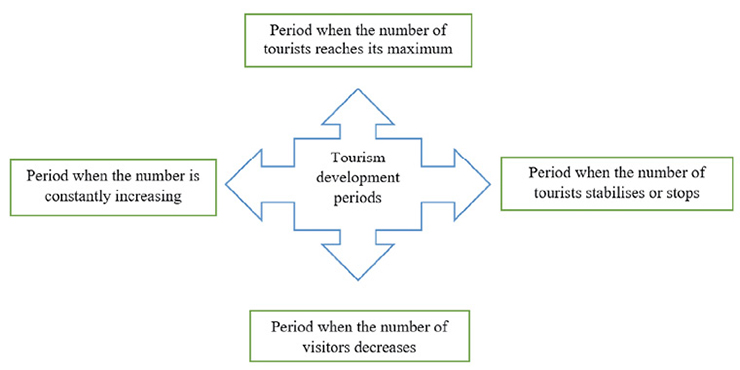
Fig. 1. Characteristics of tourism development
Source: created based on: Streimikiene, D., & Bilan, Y. (2015). REVIEW OF RURAL TOURISM DEVELOPMENT THEORIES. Transformations in Business & Economics, p. 23
The distribution of these periods shows that the tourism development cycle can encompass four periods that characterise the number of tourists, for instance, when the supply of tourism services expands more and more, wealthier tourists come to the locality who consumer and use more expensive services and products offered by tourism. Such tourists need high quality services and high class hotels. These tourist needs determine the necessity to invest into the locality. Tourists who have high income slowly push out travellers who are interested in the exclusivity of the locality rather than the diversity of tourism entertainment and services. Mass tourism promotes integration of the transport structure, i.e., airports, railways, good quality roads, water transport. In this way, mass tourism slowly pushes out tourists who have high income.
Contrary to Marecki and Lopa, in Butler’s theory of tourism development, the cyclic model encompasses the following seven stages:
1) Studying. A locality is discovered by people who appreciate its beauty and culture.
2) Engagement. A small but constantly growing flow of tourism appears. Tourists encourage local companies to provide tourist services and sell goods to travellers.
3) Development. Dynamic growth period, the flows of tourists are increasing rapidly. Additional investments are attracted, the number of “local” type of business services decreases.
4) Strengthening. The number of tourists is still growing. Marketing tools are used in order to extend the tourism season and attract even more tourists.
5) Renewal. This stage of the cyclic model includes a constantly growing number that can rapidly increase or decrease. This stage includes an opportunity to join or transition to another cycle.
6) Stagnation. The number of inbound tourists stabilises. This creates economic, social, political and environmental issues. Development of the tourism industry affects regional qualitative features that used to be treated as the main factors of attraction and exclusivity in the beginning of the tourism cycle. This stage can last for a short or a very long time.
7) Decline. If the locality does not react to the social, economic, political and environmental issues, the number of tourists begins to rapidly decrease; they choose more attractive localities. It is important to know that the cycle can restart during the renewal phase if major changes in the resource bases occur. Moreover, new artificial objects of attraction can be created or primary resources can be returned to their previous state (Butler 2008:7-9).
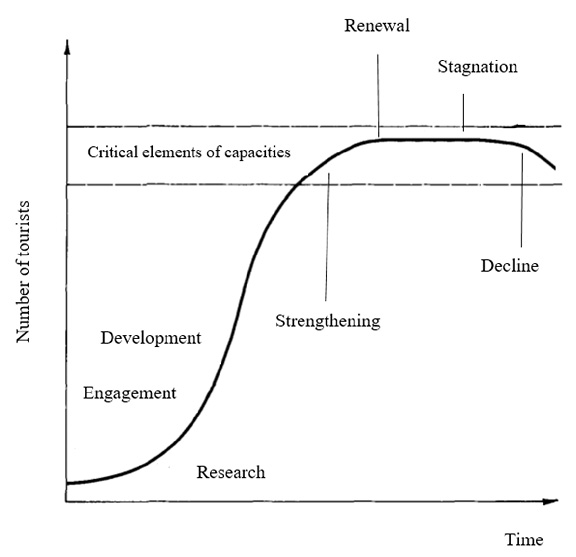
Fig. 4. Hypothetical evolution of tourism development
Source: created based on Butler, R., W. (2008). The Concept of A Tourist Area Cycle of Evolution: Implications for Management of Resources, p. 7
Having reviewed Butler’s model, it can be concluded that the tourism development cycle model encompasses seven laws that are determined by the suitable selection of a development model. It is also important to note that tourism development theories are mostly oriented towards satisfying tourist needs only. Tourism development theories and main models are based on the evolution approach to tourism development and its formation factors, which means that various factors that determine successful urban tourism development arise.
Therefore, tourism development can be described as a changing process that is conditioned by constantly increasing flows of tourists who are interested in a particular locality. It is difficult to define tourism development; thus, it is explained based on stages, periods and cycles. All of these aspects of tourism development peculiarities relate in terms of the main fact that cultural tourism development is formation that grows into a changing process as the increase of the supply of cultural tourism products and promotes engagement of not only interested state institutions and organisations, but also the society that cares about culture, its resources and cultural values, as a result of which tourism development planning is carried out.
Cultural tourism development planning
Tourism is planned due to various reasons. First of all, it is due to economic benefit that manifests because of well-being and establishment of new jobs. Of course, this determines development of the community, preservation of cultural heritage and natural objects as well as development of arts and crafts. On the other hand, one cannot ignore the positive impact of tourism which is impacted by the abundance of tourists and tourism development. Marozienė (2010) claims that in those states where tourism is not strongly developed, planning can provide the necessary guidelines for tourism development, and in those localities where tourism is developed, planning is required in order to renew or refresh the tourism sector and to maintain its viability (Marozienė 2010:10). In order for the negative effect of tourism to be reduces and its benefit to be increased, effective tourism planning and management is a guarantee. When planning their activities, society, business, government institutions have to take into account a potential effect on a human being, community, culture and the environment. This shows the benefit of the activities; thus, organisations and institutions prepare development plans. And if there is visible damage, they look for ways to reduce the negative effect or compensate the consequences. Therefore, an accurate future forecast requires planning. Today, tourism planning occurs in many regions and countries that aim at controlling tourism development thus paying more attention to environmental and cultural-social factors and cultural tourism development.
Planning is how an action sequence is planned that aims at implementing one or a few mutually related goals (Mason 2003:66). Marozienė (2010) describes planning as a thinking process that promotes purposeful creation. This includes drafting a project, programme or method to achieve a specific goal or result (Marozienė 2010:10). It should be noted that planning in the broad sense is a disciplined and formalised activity where the society can also encourage changes. This is a process that encompasses the ability to foresee future events, analyse then and evaluate the situation as well as think and achieve solutions. Just as any other area or activity, tourism planning uses the same methods and concepts, except these ones are adapted to the tourism system. Cultural tourism planning is a process that includes a foreseen future vision and raised goals and influencing factors. In order to successfully implement cultural tourism planning processes, actions of institutions, cultural organisations, local residents and entrepreneurs have to be evaluated and controlled, their responsibilities must be determined, and activity implementation schedule must be foreseen (Marozienė 2010:10-11). The most difficult thing to achieve when planning tourism is that all the organisations in the tourism sector, cultural organisations and business organisations would have mutual goals; therefore, it is very important to define goals and determine their implementation methods. Cultural tourism development and planning should satisfy the needs of not only local or inbound tourists, but also local residents; thus, in order to attract more tourists to a certain locality (village, city, region or country) and provide them with better conditions, it is important to have a vision of how cultural tourism will satisfy the society’s needs; it is also important that cultural tourism development planning complies with cultural tourism goals. For example, in cultural tourism, one of the bases for a cultural goal is the fact that the behaviour of tourists must respect cultural activities, location and values. Projects must be coordinated with national and local heritage, cultivate the community’s identity and the sense of dependency on the locality. Tourist activities must comply with the needs and expectations of local residents by preserving local cultures from any negative impact (Marozienė 2010:11).
Summing up, it can be said that planning is an important factor of cultural tourism development that becomes a process and joins the sectors of tourism and culture for shared cooperation. Planning has to be a flexible, constant and adapting process because cultural tourism development planning creates opportunities to achieve cultural tourism and shared tourism goals as well as ensure cooperation between cultural organisations and institutions, business and local community, increase positive tourism benefit, and decrease its negative impact.
Research strategy
Research strategy in the context of the conception is defined as follows: all of the qualitative research traditions can generally be joined into three categories (i.e., oriented towards individual experiences, oriented towards the society and culture, and oriented towards language and communication; the following three strategies are distinguished: deep interview strategy, case study strategy, and analysis of recorded spoken events (Novelskaitė 2012:10). This study aims at revealing the impact of a cultural event on cultural tourism development planning in Kaunas city; therefore, the case study strategy was selected. This research strategy was selected because a case study as a strategy is based on the outlooks of both the researcher and the participant, points out immersion into research environment (Novelskaitė 2012:10).
Research units and their sampling
The sampling of qualitative study respondents is carried out by means of targeted criterion sampling because the criterion sampling method is effective as it helps to collect quality data. (Bitinas et al. 2008:103) Criterion sampling is also applied when sample units are selected from the population based on the criteria determined by the researcher ((Bitinas et al. 2008:102). The following criteria were distinguished for the respondents:
- xperts who work in the cultural events sector that have higher education and international experience.
- Persons who have higher education and an area of specialisation (tourism, city municipality administration).
- Persons who have the required information.
During the research, cultural events operators (organisers, leaders), tourism specialists and a city municipality employee were interviewed.
The situation of cultural tourism in Kaunas city
Cultural tourism is marked out by the fact that it has a goal that manifests through culture when it is aimed at participating in a purposefully planned event; speaking of the definition of cultural tourism, Respondent No. 3 says that, “Tourists who are more interested in participation in event or getting to know a city’s architecture, their goal is not to shop, the primary interest is an event, festival or getting to know the city, and only then all the other factors such as eating out, shopping; however, the priority that encourages them to travel is a cultural event.” Respondent No. 1 adds, “Cultural tourism is a developing and flourishing area of tourism.” The nature of this type of tourism encompasses cultural activities through various cultural heritage objects, visiting museums, excursions, cultural events.”
Data analysis was performed to figure out the condition of tourism in Kaunas in 2018. Figures 7, 8 and 9 present the 2018 statistics of Kaunas city tourism.
2018 statistics of Kaunas city tourism
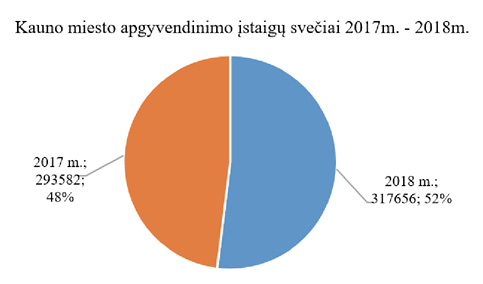
Fig. 7. Guests of Kaunas city accommodation institutions in 2017–2018
Source: Information from the Department of Tourism of the Public Institution Kaunas IN
According to the data of Kaunas TIC, Figure 7 shows that in 2018, Kaunas city accommodation institutions had 317 656 guests; in comparison with 2017, the number of guests increased by 8.2%.
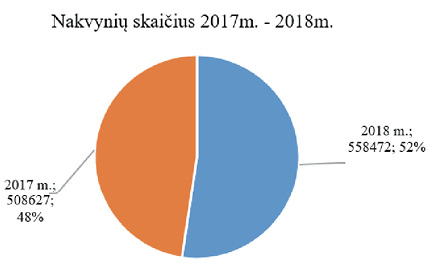
Fig. 8. Number of nights in 2017–2018
Source: Information from the Department of Tourism of the Public Institution Kaunas IN
Guests spent 558 472 nights, and the number of nights increased by 9.8% In 2018, the average duration of a stay was 1.8 nights.
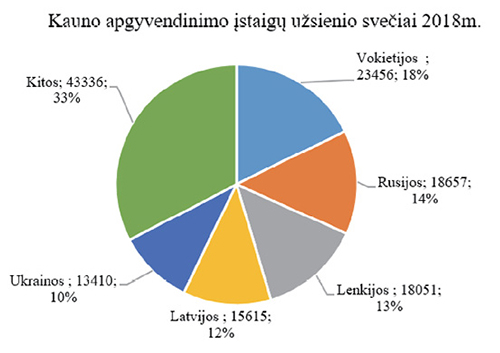
Fig. 9. Foreign guests in Kaunas accommodation institutions
Source: Information from the Department of Tourism of the Public Institution Kaunas IN
Figure 9 shows that 67.3% of all the guests of Kaunas accommodation institutions were foreign guests. Foreign guests mostly came from the following countries: Germany (23 456 guests (+17%); 52 832 nights (+40%); average duration of a stay – 2.3 nights), Russia (18 657 guests (0%); 27 340 nights (-4%); average duration of a stay – 1.5 nights), Poland (18 051 guests (+17%); 225 920 nights (+7%), average duration of a stay – 1.4 nights), Latvia (15 615 guests (+2%), 21 285 nights (3%); average duration of a stay – 1.4 nights) and Ukraine (13 410 guests (+44%); 23 334 nights (+53%); average duration of a stay – 1.7 nights) (Information from the Department of Tourism of the Public Institution Kaunas IN, 2019). Comparing the data of 2017 and 2018, the number of tourists is growing. Since tourists are not distinguished based on motivation, it can be assumed that approx. half of the inbound foreign tourists are also representatives of cultural tourism.
In 2018, the occupancy rate of Kaunas hotel rooms reached 69.5%. The occupancy rate of Kaunas hotel spaces was 51.4%. The highest occupancy rate of rooms could be observed in May (89.8%), June (8.6%) and August (79.4%); the lowest occupancy rate could be seen in January (47.5%). (Information from the Department of Tourism of the Public Institution Kaunas IN, 2019).
Table 11. Cultural events in Kaunas city in 2018 during the months of May, June and August
|
The month of May |
The month of June |
The month of August |
|
Kaunas 2022 – European culture forum 2018 |
Pažaislis music festival |
Pažaislis music festival |
|
International dance competition Amber Couple |
Pažaislis music festival Johann Strauss’ Music on Water |
|
|
International poetry festival Poetry Spring 2018 |
Concerts by bands Saber Tiger and The Nomad |
|
|
Concert by Bryan Adams |
Kaunas 2022 international summer school Modernism for the Future |
|
|
Concert by Blaze Bailey |
|
|
|
Event Hanza Days |
||
|
Baltic designer days |
||
|
BC Kaunas Žalgiris matches |
Source: Kaunas Pilnas Kultūros
Analysing Table 10 and the May 2018 calendar of Kaunas city events, it can be seen that there were various events in the city from plays to exhibitions or cinema sessions; however, these events aim more at the local community and local tourism such as The Night of Museums, Street Music Day, and speaking of attracting inbound tourists, there were such larger-scale events as Cultural Forum 2018 organised by the European Capital of Culture that took place for two days and was international; also, an international dance competition Amber Couple took place along with international poetry festival Poetry Spring 2018, Bryan Adams concert, Blaze Bailey concert, Hanza Days event, Baltic designers days, and several basketball matches. The number of events in June was also high, and the mega event Pažaislis music festival started: the beginning concert that introduced a month-long events of the festival such as Pažaislis music festival: Johann Strauss’ Music on Water, etc. Also, concerts by bands Saber Tiger and The Nomad took place; there were workshops of the international summer school in Kaunas all week initiated by Kaunas 2022 programme Modernism for the Future. In August, Pažaislis music festival continued, and there were no other major events in August. On the one hand, it can be presumed that because of the major events such as the European Capital of Culture forum or Pažaislis music festival, tourists were attracted; however, the fact is that tourism remains seasonal because people tend to travel during summer, and tourists usually travel for cognitive reasons; thus, tourism becomes cognitive rather than cultural. The analysis shows that during 2014-2020, one of the objective of Lithuanian tourism development is to increase the supply of cultural events and entertainment outside of the tourism season (Appendix 4), which would create larger tourist flows during colder periods.
It is important to note that throughout 2018, Public Institution Kaunas IN information centres welcomed 114 062 visitors 37.9% of whom were Lithuanian (43 187) and 62.1% – foreigners (70 875). The highest number of visitors could be observed in August (17 378), slightly less – in July (15 411) and September (14 992). The highest numbers of guests came from the following countries: Germany (8 757), Russia (7 213), Poland (6 818), France (4 166), Spain (3 892) ((Information from the Department of Tourism of the Public Institution Kaunas IN, 2019).
In order to figure out which type of tourism is developed the most when organising cultural-mega events, respondents unambiguously emphasise that it is cultural tourism that overlaps with creative, cognitive and heritage tourism. Respondent No. 4 points out, “Because a traveller aims at seeing, participating, visiting and getting to know a city through events. Also, a tourist is automatically interested in objects of cultural heritage such as architecture because Europe and the world include high numbers of people who not only are architects, but are also interested in architecture, have knowledge of Gothic, Baroque, and are interested in those city routes where they can see all of this, and all of this encompasses knowledge of art, culture and the city.”
The study reveals what tourists are attracted more by means of cultural-mega events; the answers were different: according to Expert No. 1 and Respondents No. 2 and No. 3, target tourists are the most frequent “<...> and their primary goal is to participate in an organised cultural event; such tourists are usually local, motivated and creative” (Expert No. 1); “Speaking of a cultural-mega event, 90-95% are tourists who know and follow the news on an event and have a goal to participate in it; these would be local tourists from Lithuania who want to see an exceptional event” (Respondent No. 2); Expert No. 2 and Respondent No. 1 and No. 4 are of different opinions because “cultural events still include more random tourists whose goal is to first of all visit family members, relatives and friends, and then participate in an event randomly; such tourists come from abroad and are cultural tourists” (Respondent No. 4). “Secondary tourists usually come from abroad to visit relatives in Lithuania, and then they start looking for cultural events and participate in them” (Respondent No. 1). However, “<...> it does not matter if the tourist is target or random; what matters is the fact that people are very sensitive; therefore, the quality of an event must be of high quality because after the event they will have a certain opinion, which can have impact on tourism development” (Expert No. 2).
Therefore, the obtained results show that in 2018, city’s accommodation institutions welcomed more tourists than in 2017. They mostly came from Germany, Russia, Poland, Latvia and Ukraine. The results show that during cultural tourism, both target, local, motivated tourists and foreign tourists who come to participate in cultural events visit the country. According to the data of Kaunas TIC, information centres welcomed 114 062 visitors 37.9% of whom were Lithuanian (43 187) and 62.1% – foreigners (70 875).
Impact of cultural events on cultural tourism development planning
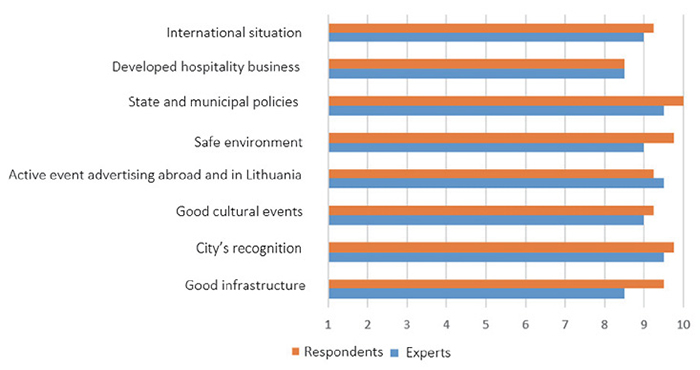
Fig. 14. Strength of the impact of factors
Analysing Figure 14, it can be seen that all the factors have strong impact on cultural tourism development and planning in the city. Values on the scale from 1 to 4 – no impact; from 5 to 7 – average impact; from 8 to 10 – strong impact. An answer is evaluated by 1-100%, thus the data from the experts and respondents is calculated.
The city’s international situation: Expert No. 1 and Respondent No. 2 claim, “Tourism development can be strongly impacted by many unemployed today’s international popularity routes, for instance, Kaunas’ Jews’ and all the emigrants from Kaunas because of whom Kaunas internationality can be strongly increased, which is being worked on; however, it can create a strong impact because an increasing number of tourists from Israel can be observed, and these are not just tourists who come to see Kaunas or experience or remember certain history of the Holocaust, but they come with a certain purposeful search of investments and partnerships, certain offer packets how to publicise and popularise Kaunas elsewhere, how to introduce it as a city of unique opportunities.”
Good infrastructure: “A clean, convenient city with clean sidewalks, renewed parks, city façades can attract tourists who see the city differently as a prospective and modern city (Respondent No. 4).
Recognition of the city: “<...> even know the title of the European Capital of Culture for Kaunas is like a title of recognition and quality because these titles are not awarded for no reason; and inbound tourism is interested in that and follows it, thus, there is a possibility that through certain signs recognition of the city will have a strong impact” (Respondent No. 3).
Good cultural events: “They have a strong impact on tourism expansion because a tourist usually aims at seeing, participating, visiting and getting to know the city through cultural events” (Expert No. 2).
Active advertising of an event both in Lithuania and abroad: “It has impact on tourism flows because tourists are interested in that which occurs abroad, and if advertising is purposefully directed and used as a means of communication, it can have impact on tourism development” (Expert No. 1).
Policies carried out by state and municipality: “It is a fact that it has a strong impact because if suddenly certain political understanding changes, it can have completely negative results, and the impact will be absolutely opposite” (Respondent No. 1).
Within the general context of the analysis, comparing the values of experts and respondents, there are no major differences; of course, there is a slight difference in scores, yet all the factors fall under the category of strong impact. For instance, according to the experts, good infrastructure is evaluated by 8.5 points, and respondents give it the evaluation of 9.5; however, both evaluations show that good infrastructure has strong impact on cultural tourism development through cultural events.
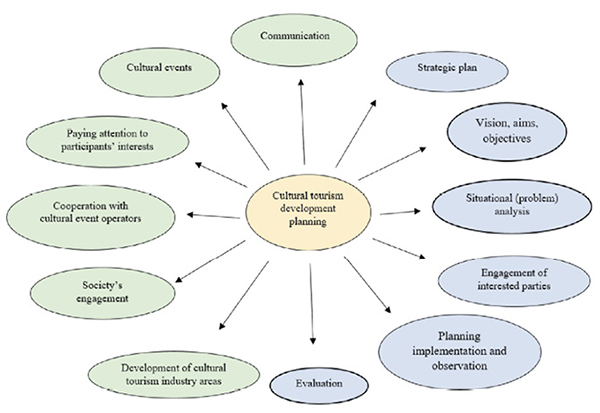
Fig. 15. Cultural tourism development planning
The experts and respondents express during the study that cultural events and their impact are unambiguously a tool of cultural tourism development; however, it is necessary to understand how this operates and what essential steps occur in the process of planning. Figure 15 shows (right side, blue colour) what tourism development planning stages there are based on Marozienė’s (2010) tourism development planning model, and the left side (green colour) shoes experts and respondents’ answers.
Communication: “Planning cultural tourism development through cultural events employs tourist programmes when carrying out communication which is diverse, and printed advertising” (Respondent No. 1), “<...> participation in international tourism exhibitions, presentation of publications are directed to tourism agencies and travel organisers, and, of course, newsletters on social media such as Facebook and Instagram with specific event references are used, which enables finding out more information, along with marketing promotions” (Respondent No. 3). “Also, the main planning specificity when planning cultural tourism development in Kaunas city is unambiguously related to cultural events and general communication; planning occurs as a process, and timely main information on cultural events or their programme idea is important in order to develop a plan with other institutions by informing them about occurring cultural events” (Respondents No. 3 and No. 1).
Cooperation with operators of cultural events: “Developing and planning cultural tourism in Kaunas city through cultural events faces the main problems that include the lack of cooperation with cultural event organisers because event dates are announced too late; it is even worse when even programmes are announced too late, which causes damage to cultural tourism planning because the main goal of cultural tourism tourists is to visit the event, and people start to look up events half a year in advance at latest when planning a tourist trip. Another problem is the fact that the English language nowadays is practically unavoidable, and programmes or websites of most of the major events do not have an English version of the event and its programme; therefore, the tourist can immediately become uninterested” (Respondent No. 3).
Paying attention to participants’ interests: Expert No.2 claims that “it is necessary to understand and pay attention to the interests of the participants of the sector, carry out communication and cooperation with them as well as look for ways and tools to make business development, introduction of new hotel networks easier as well as create special or favourable conditions for new businesses.”
Strategic plan: “Planning is inseparable from other cultural tourism development plants in the city, cultural tourism in strategic planning is based on the strategy of culture and its formulated goals and directions” (Respondent No. 2).
Cultural events: “Cultural events are one of the cultural tourism development opportunities in the city because a cultural even communicates a message about the city, its uniqueness, and attracts tourist flows” (Respondent No. 1). Moreover, Respondent No. 1 agrees, while Expert No. 1 and Respondent No. 4 add that “cultural mega events can help the city to plan cultural tourism development because not only economic impact is expected but also social, cultural impact as well as increase in tourist flows as the city invests funds into a mega event and expects for long-term economic benefit; however, the expectation also includes social, sociocultural benefit and increased tourist flows. In other words, investment should have a certain expression of return, which in this case could be cultural tourism development.” Also, Respondent No. 2 adds that “the administration of Kaunas city municipality plans cultural tourism development and relates it to cultural mega events because city mega events are one of the tools of cultural tourism that promote and refresh city’s visits, tourism and flows.”
Engagement of interested parties: “International partners and relations are involved; they add to planning in the area of cultural tourism, introduction of new hotel networks into the city, cooperation of tourism agencies, travel agencies” (Expert No. 2). With active engagement, international funds and other partners provide conditions for urban identity development in tourist flows.
Development of cultural tourism industry areas: Expert No. 1 and Respondent No. 3 claim, “Today the best known area of the cultural tourism industry in Kaunas is the interwar period modernism architecture; however, this area needs to be developed because the structures need to be adapted to visiting and opened, to creating in them, operate and make them active, allow people to spend the night in them in order for them to feel the spirit, as a consequence of which this cultural tourism development could be planned.”
Comparing the steps for cultural tourism development planning suggested by experts and respondents, it can be noted that strategic plan and interested parties’ engagement expressed by experts and respondents matched the tourism development planning stages; however, vision, aim, objectives, implementation, observation and evaluation are not mentioned, and they are essential planning stages in order to carry out successful cultural tourism development planning. However, new planning stages were proposed and they could be compared to the stage implementation steps. For instance, having a vision, aims and objectives, measures are used to implement them, and one of the tools can be cultural events that makes tourism development more active and promotes tourism flows.
Summing up, it can be said that cultural mega events develop cultural tourism that is characteristic of created impact through such factors as good infrastructure, international situation, city’s recognition, good cultural events, active event advertising, safe environment and developed healthcare business which have impact on cultural tourism development planning when carrying out cultural mega events. When planning cultural tourism development through cultural events, it is necessary to define the interests of the participants of that sector, look for ways how to make business development easier and create opportunities for new hotel networks to enter the city. When planning cultural tourism development, one of the stages is communication that is carried out in international tourism fairs, exhibitions; also, printed material such as leaflets, booklets are used and provide information on Kaunas city events; of course, in the modern world, the most active in spreading the message are social networks and various marketing promotions that help to communicate the message on major events. Also, the process of cultural tourism development strategic planning includes identification of goals, evaluation of methods to achieve them, all tourism resources, interested parties and organisations, market and tourism locality programmes; therefore, in order to successfully develop cultural tourism, it is relevant to follow the tourism development stages.
Conclusions
Cultural tourism development is a process that is defines as a natural process of changes, thus is a changing process that is explained based on stages (when tourists look for suitable locality, when they find it and create tourist flows into it, when the tourism development stage becomes mature, and when the tourism business and healthcare sector begins to develop), periods (periods help to orient towards the number of tourists when it increases, reaches its maximum, stabilises and decreases), cycles (transitional, such parts of the cycle as researching, engagement, development, strengthening, renewal, stagnation and decline). This shows that tourism development is a planning process that involves not only interested state institutions, cultural organisations and companies that want to provide the society with the increase of cultural products, but also the society itself that would accept consumer culture. In order to plan tourism development in the city, there has to be a process that would include planned action sequence that would help to implement mutually related goals. Cultural tourism development planning occurs based on the same principle as in other activities but it is specifically oriented towards the system of tourism.
The study shows that there are no different plants, and the aims and directions as formulated by the strategy of culture are followed. Also, cultural tourism development planning encompasses tourism, urban and cultural sector cooperation, and the planning process between these parties should be constant and transparent in order to achieve cultural tourism goals.
One of the main problems when planning cultural tourism development is cultural event organisers being late in providing the main information on an event; therefore, tourist flows are lost. Also, in order to attract not only local tourism, but also foreigners, the English language is inevitable; however, not all major event see it as an important priority. All this is reflected in tourism development planning because the main specificity occurs as a process of planning, and in order to plan tourism development, it is essential to communicate, obtain accurate information on time from cultural event organisers so that it is possible to share it with other interested institutions such as tourism agencies, travel agencies, hotels and international relations.
Literature
BITINAS, B., RUPŠIENĖ, L., & ŽYDŽIŪNAITĖ, V. (2008). Kokybinių tyrimų metodologija. Klaipėda.
BUTLER, R. W. (2008). The Concept of A Tourist Area Cycle of Evolution: Implications for Management of Resources. Canadian Geographer / Le Géographe canadien, 24(1):5 - 12.
JURĖNIENĖ, V., & URBONIENĖ, A. (2018). KULTŪROS CENTRAI: bendradarbiavimas, bendruomenių mobilizavimas ir edukacinės praktikos. Vilnius: Vilnius University.
Kaunas IN. (2019). visit.kaunas.lt. Prieiga: https://www.visit.kaunas.lt/lt/atvykite/statistika/2018-m-kauno-miesto-turizmo-statistika/ [Žiūr. 2019-04-28]
LOPA, J. M., & MARECKI, R. F. (1999). The critical role of quality in the tourism system. ProQuest Science Journals, 37-42.
MAROZIENĖ, I. (2010). Darnaus turizmo planavimo modelis. Vilnius.
MASON, P. (2003). Tourism Impacts, Planning and Management . AMSTERDAM BOSTON HEIDELBERG LONDON NEW YORK OXFORD PARIS: Butterworth Heinemann.
NOVELSKAITĖ, A. (2012). Socialinio tyrimo terminija: tyrimo strategija, tyrimo planas, tyrimo dizainas, tyrimo procesas. Vilnius .
STREIMIKIENE, D., & BILAN, Y. (2015). REVIEW OF RURAL TOURISM DEVELOPMENT THEORIES. Transformations in Business & Economics, 2(35):21-34. Access: http://www.transformations.knf.vu.lt/35/ge35.pdf [Accessed on 05/03/2019]
TURNER, R. K. (2003). Sustainable Environmental Economics and Management: Principles and Practice. London.